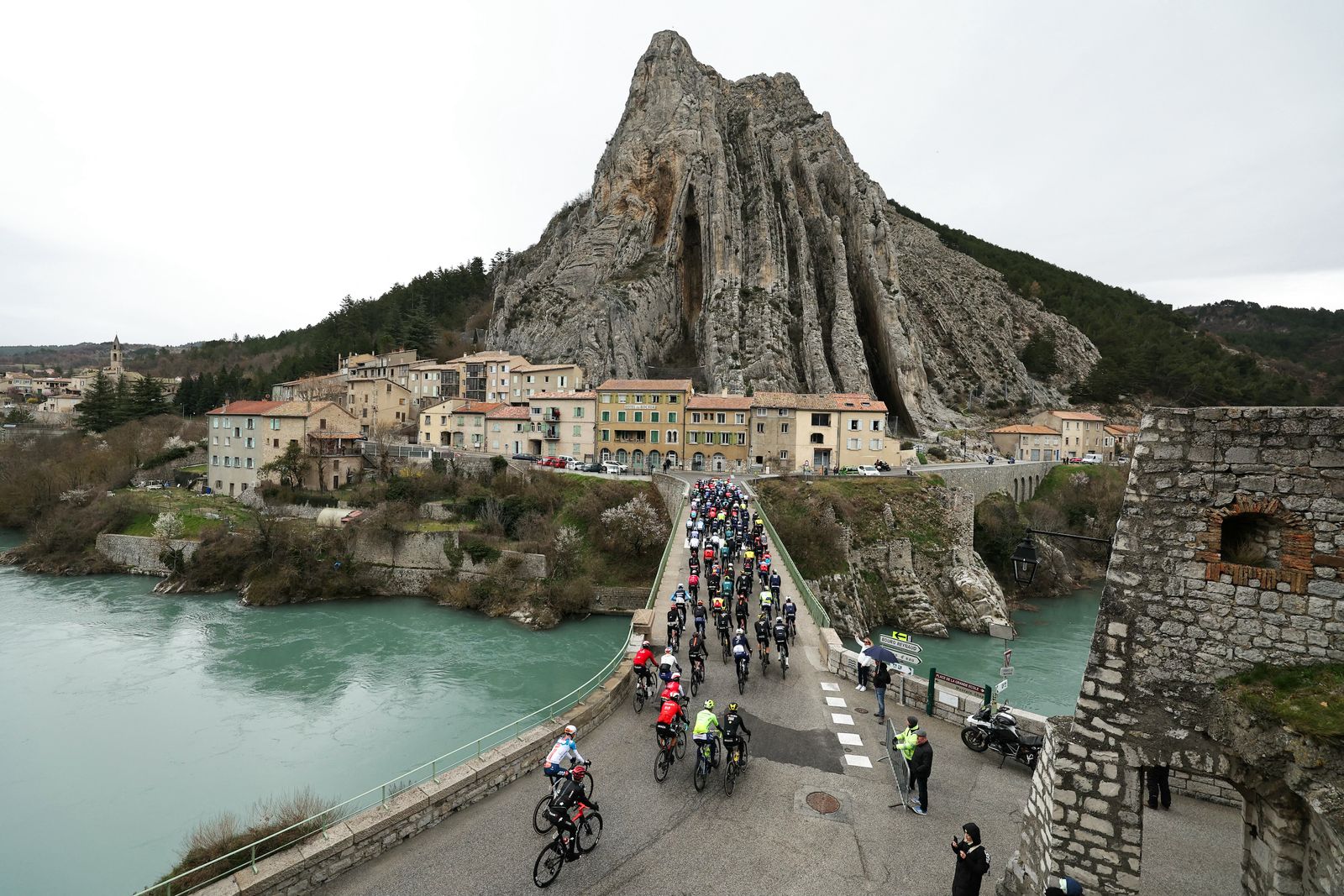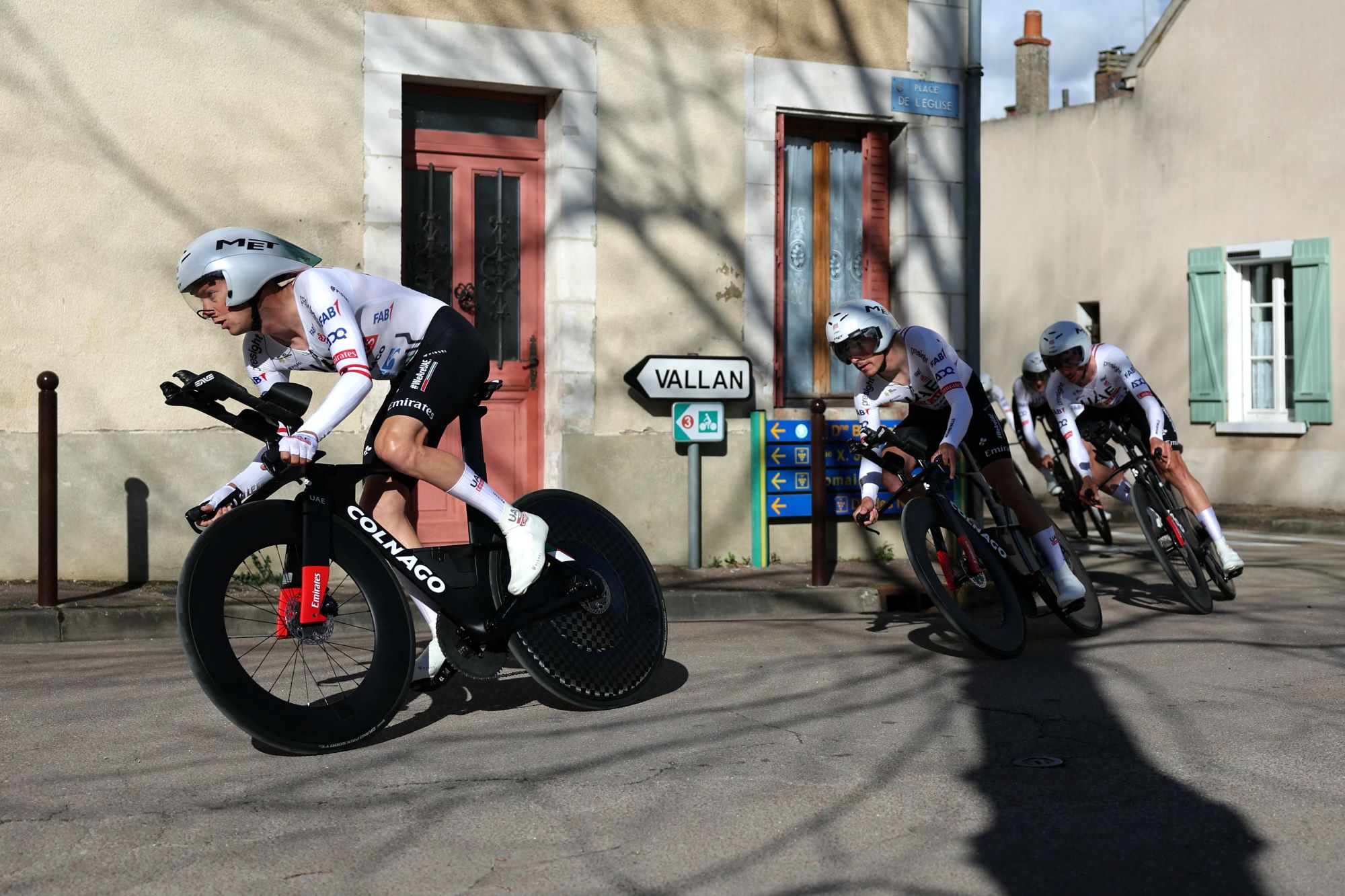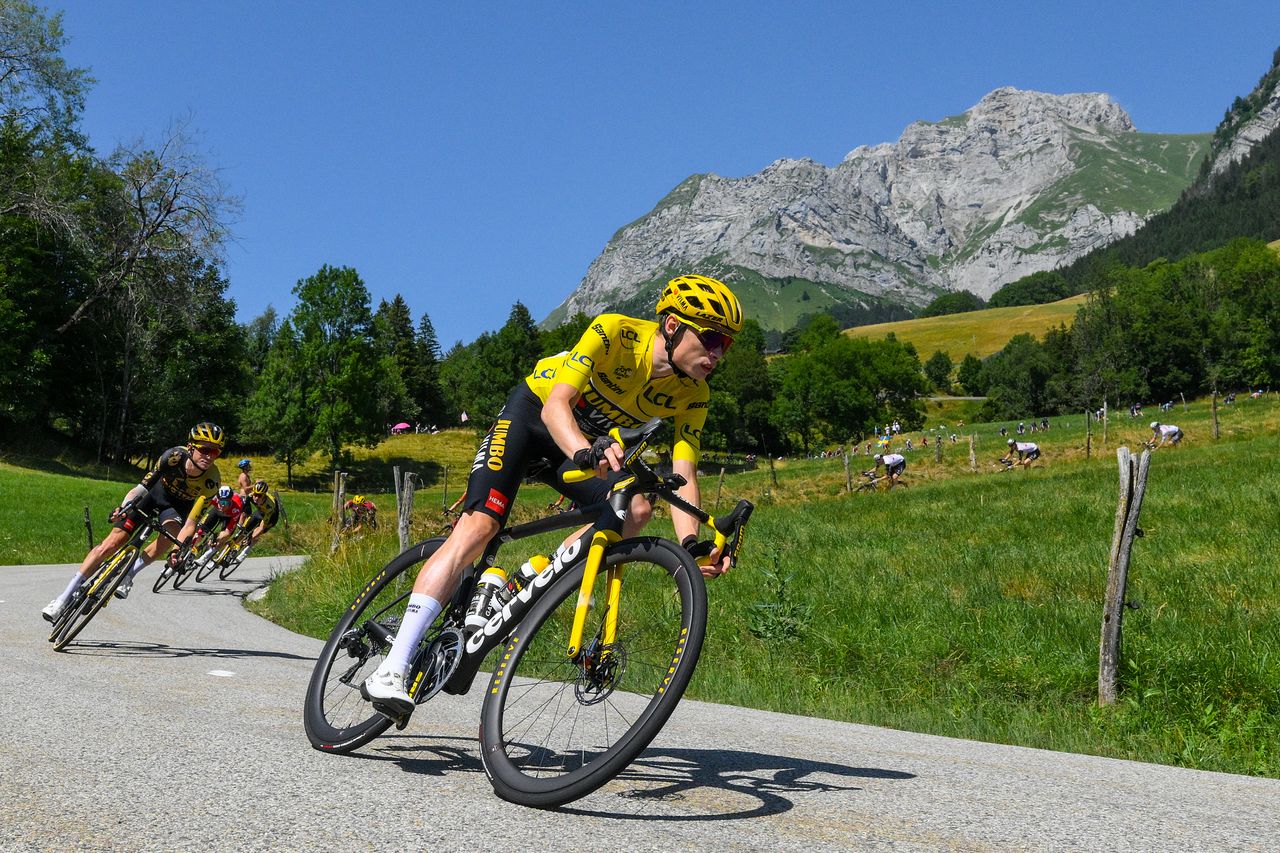When you follow the world of professional cycling, there's a good chance you've heard the name Jonas Vingegaard. He's a remarkable athlete, truly, someone who has captivated many with his incredible performances on the biggest stages. People often wonder about the physical makeup of such champions, you know, what kind of build allows them to achieve those amazing feats of endurance and speed. It's a natural curiosity, really, to try and understand the human engine behind such powerful displays.
So, we often find ourselves asking about the finer points of an athlete's physique, things like their height and their weight. These numbers, while seemingly straightforward, actually tell a rather complex story about how a cyclist is built for the demands of their sport. It's not just about being strong; it's also about having the right proportions and the right amount of mass for the specific challenges they face, whether that's climbing steep mountains or racing against the clock on flat roads. There's a lot that goes into it, frankly.
This discussion, then, is all about exploring the general significance of these physical attributes in the context of a top-tier cyclist like Jonas Vingegaard. We'll look at why these measurements are considered so important and what they typically mean for someone who spends their life on two wheels, pushing their body to its absolute limits. It's a fascinating subject, in a way, understanding the interplay between an athlete's natural gifts and the intense preparation that shapes them into a champion.
- Understanding The Family Life Of Donald Glover A Focus On His Children
- Luca A Journey Of Friendship And Selfdiscovery In The Trailer
- Exploring The Enigmatic Life Of Yuen Qiu
- Austin Kinkade The Rising Star In The Digital Realm
- Exploring The Family Life Of Rob Zombie Does He Have Kids
Table of Contents
- The Champion's Path - A Look at Jonas Vingegaard
- Personal Details and Athletic Profile for Jonas Vingegaard
- Why Do Physical Attributes Matter for Cyclists and Jonas Vingegaard's Performance?
- Is There an Optimal Build for a Grand Tour Rider, and How Does Jonas Vingegaard's Height Fit In?
- How Do Elite Athletes Maintain Their Physique, Especially Regarding Jonas Vingegaard's Weight?
- What Goes Into Managing an Athlete's Shape, and What Does Jonas Vingegaard Need to Know?
- Understanding the Significance of Weight and Height in Cycling
- What Role Do These Measurements Play in Jonas Vingegaard's Cycling Performance?
The Champion's Path - A Look at Jonas Vingegaard
Jonas Vingegaard, a name that has become synonymous with incredible grit and climbing prowess in the cycling world, has really captured the imagination of fans globally. His path to becoming a top-tier professional cyclist is, in some respects, a testament to dedication and a deep understanding of what it takes to excel in one of the most physically demanding sports around. He's a rider who, quite simply, seems to thrive when the roads tilt skyward, which is a very specific kind of talent to possess. It's almost as if he was built for those long, grueling ascents.
His rise through the ranks has been, well, pretty remarkable. From his earlier days, it was clear he had a special gift for pedaling hard and sustaining effort over long periods. This kind of sustained excellence, you know, doesn't just happen by chance. It's the result of countless hours of training, very careful planning, and a genuine commitment to pushing personal boundaries. He really embodies the spirit of a true competitor, somebody who is always looking for that extra edge, that little bit more. And that, in a way, is what makes watching him compete so compelling.
When we talk about athletes like Jonas, it's not just about the raw physical ability, though that's certainly a huge part of it. It's also about the mental fortitude, the ability to stay focused when the body is screaming for a rest, and the strategic thinking that goes into every race. He's a thinking rider, clearly, someone who understands the ebb and flow of a race and how to position himself for success. This blend of physical gifts and mental sharpness is, arguably, what sets the very best apart from the rest of the pack, and it's something Jonas seems to have in spades.
- Sally Struthers A Journey Through Her Multifaceted Career
- The Life Of Alexander Edwards A Multifaceted Talent
- The Valor Of Christopher Sheehan Navy Seal
- Discovering Lamine Yamals Journey The Rising Stars Legacy
- The Mystery Who Is Sam On General Hospital Married To In Real Life
Personal Details and Athletic Profile for Jonas Vingegaard
When we discuss a professional cyclist like Jonas Vingegaard, people are naturally curious about his personal background and the specific elements that make up his athletic profile. While exact, detailed measurements and personal information are often kept private by athletes and their teams, we can still talk about the general categories of information that help paint a picture of a rider's physical makeup and how it contributes to their success. It's all part of understanding the athlete as a whole, you know.
For someone like Jonas, who excels in the mountains, certain physical attributes are typically very beneficial. We often think about things like a rider's reach, their general body mass, and how those factors interact with their ability to produce power on the pedals. These aren't just random numbers; they are, in fact, quite important indicators of a cyclist's suitability for different types of terrain and racing styles. It's a very precise science, in some respects, optimizing the human body for such demanding efforts.
Below is a general representation of the kind of personal details and athletic data that fans and analysts might look for when trying to understand a top cyclist's profile. Please note that specific, precise figures for Jonas Vingegaard are not publicly disclosed or readily available in a verified format, so this table serves as an illustrative example of the types of information typically considered relevant for a world-class rider. It's about the general picture, really, of what makes a champion tick.
| Category | Typical Information Sought |
|---|---|
| Full Name | Jonas Vingegaard Rasmussen |
| Nationality | Danish |
| Birth Date | (Specific date not widely publicized, but generally known year of birth) |
| Place of Birth | (General region or country of origin) |
| Professional Debut | (Year of entry into professional cycling) |
| Primary Discipline | Road Cycling (Grand Tours, Stage Races, Climbing) |
| General Build | Lean, typically suited for climbing |
| Typical Height | (Approximate measurement, often within a range for climbers) |
| Typical Race Weight | (Approximate measurement, highly variable and race-specific) |
| Key Strengths | Climbing ability, sustained effort, tactical awareness |
Why Do Physical Attributes Matter for Cyclists and Jonas Vingegaard's Performance?
It's a very common question, isn't it, why a cyclist's physical attributes, like their reach and their mass, are so frequently discussed? For someone like Jonas Vingegaard, whose performance is scrutinized at the highest levels of the sport, these characteristics are absolutely fundamental. They're not just interesting facts; they are, in fact, incredibly important elements that directly influence how a rider performs on different types of terrain and in various race situations. It's pretty much at the core of their athletic identity.
Consider, for instance, the power-to-weight ratio. This is a concept that's often talked about in cycling, and for good reason. It basically describes how much power a rider can produce relative to their body mass. For a climber, like Jonas, a high power-to-weight ratio is absolutely critical. The less mass you have to pull up a hill, the faster you can go, assuming you can still generate a lot of force. So, a rider's weight, in particular, becomes a very significant factor when the road goes upwards. It's a delicate balance, you know, between being strong and being light.
Then there's the aspect of aerodynamics. While a rider's reach might not seem as immediately relevant as their mass for climbing, it plays a considerable role in how they interact with the air, especially during time trials or on flat sections where speed is paramount. A more compact or streamlined body shape can reduce drag, allowing a rider to go faster with the same amount of effort. So, in a way, every part of a cyclist's physique contributes to their overall efficiency and their ability to perform at their best. It's a really intricate puzzle, actually.
Is There an Optimal Build for a Grand Tour Rider, and How Does Jonas Vingegaard's Height Fit In?
People often wonder if there's a kind of "perfect" body type for a Grand Tour rider, someone who can endure three weeks of intense racing across mountains, flats, and time trials. The truth is, it's not a one-size-fits-all answer, but there are definitely some general trends. For climbers, like Jonas Vingegaard, a lighter frame is typically very advantageous. This often means being somewhat slender, which can be associated with a certain height range that allows for an efficient power delivery system. So, his height, in that respect, is part of a larger picture of his climbing suitability.
A rider's reach, for example, can influence their bike fit and their position on the bicycle, which in turn affects comfort, power output, and aerodynamics. While being very tall might offer some leverage advantages in certain situations, it can also mean carrying more overall mass, which, as we discussed, is less ideal for climbing. Conversely, being quite short might make it harder to generate the same absolute power. So, there's a sort of sweet spot that many top climbers seem to fall into, where their height allows for a good balance of power generation and minimal mass. It's a subtle interplay, really.
Jonas Vingegaard's physique, whatever his exact measurements, is clearly optimized for the kind of racing he excels at. His ability to float up steep gradients suggests a build that prioritizes a high power-to-weight ratio. This isn't just about being naturally lean; it's also about the very specific training and nutritional strategies that shape an athlete's body for peak performance in their chosen discipline. So, his height, combined with his overall build, contributes to his remarkable talent for conquering mountains. It's a very tailored approach, you know, to athletic development.
How Do Elite Athletes Maintain Their Physique, Especially Regarding Jonas Vingegaard's Weight?
Maintaining the precise physique required for elite cycling, particularly when it comes to managing a rider's mass, is a truly rigorous undertaking. For someone like Jonas Vingegaard, whose success hinges on being incredibly light yet powerful, it's a constant, very careful process. It's not just about eating less; it's about a highly scientific approach to nutrition, training, and recovery that ensures the body is in its optimal state for performance. This is, basically, a full-time job in itself, you know.
The training schedule of a professional cyclist is, frankly, immensely demanding. It involves thousands of kilometers on the bike, both long endurance rides and very intense interval sessions designed to build specific physiological capacities. This consistent physical activity helps to keep body fat levels extremely low while building and maintaining lean muscle mass. The type of training is also very specific to the demands of racing, so it's not just random exercise; it's a very targeted program. And that, in a way, is what makes them so good.
Nutrition plays an absolutely central role. Elite cyclists work closely with dietitians and nutritionists to ensure they're consuming the right balance of carbohydrates for energy, protein for muscle repair, and healthy fats. Every meal, every snack, is carefully considered to fuel training, aid recovery, and maintain that ideal race mass. It's a very precise science, in some respects, ensuring the body gets exactly what it needs, when it needs it, without any excess. This meticulous attention to diet is, arguably, just as important as the training itself for managing a rider's weight.
What Goes Into Managing an Athlete's Shape, and What Does Jonas Vingegaard Need to Know?
Managing an elite athlete's shape, particularly for a cyclist like Jonas Vingegaard, involves a whole team of experts and a deep understanding of human physiology. It's far more than just a rider deciding to lose a few kilograms; it's a very integrated approach that considers everything from their training load to their sleep patterns. So, what does a top athlete, or rather, their support staff, really need to know to keep them in peak condition, especially concerning their body composition?
Firstly, there's the constant monitoring of key metrics. This includes not just daily mass measurements, but also things like body fat percentage, muscle mass, and hydration levels. These data points help the coaching and medical staff make informed decisions about training intensity, dietary adjustments, and recovery protocols. It's a really data-driven process, actually, ensuring that any changes to an athlete's shape are intentional and beneficial for performance. This kind of precise tracking is, pretty much, standard practice at the top level.
Secondly, the management of an athlete's shape is dynamic. A rider's ideal mass might vary slightly throughout the season, depending on whether they are in a heavy training block, preparing for a major tour, or recovering. For example, during intense racing periods, maintaining sufficient energy intake to avoid burnout is crucial, even if it means a slight increase in mass. So, it's about finding the right balance for the right moment in the season. Jonas, like any other top athlete, needs to know that his team is constantly adjusting these parameters to optimize his chances of success, which is a very reassuring thing, you know.
Understanding the Significance of Weight and Height in Cycling
When you look at the physical makeup of professional cyclists, it becomes very clear that their reach and their mass are not just random numbers; they are, in fact, incredibly significant factors that directly impact their performance. For a sport that demands so much from the human body, every single physical attribute is scrutinized, optimized, and tailored to the specific demands of racing. It's a very precise calculation, you know, how these measurements contribute to speed and endurance.
Think about it this way: a rider's mass directly affects how much force is needed to overcome gravity, especially on climbs. The lighter a rider is, generally speaking, the less energy they need to expend to move their body uphill. This is why you often see the very best climbers possessing a relatively slender build. It's a pure physics equation, in a way, where minimizing mass while maximizing power output is the goal. This balance is, frankly, what separates the good climbers from the truly exceptional ones.
On the other hand, a rider's reach can influence their aerodynamic profile. A taller rider might present a larger frontal area to the wind, which could mean more drag, especially during time trials or on flat, fast sections. However, a certain reach can also provide better leverage for power application. So, there's a constant trade-off and optimization that goes into determining the ideal body shape for different types of racing. It's a really interesting interplay of forces, actually, that shapes a cyclist's performance.
What Role Do These Measurements Play in Jonas Vingegaard's Cycling Performance?
For a cyclist of Jonas Vingegaard's caliber, his physical measurements, specifically his mass and his reach, play an absolutely central role in his ability to perform at the highest level. These aren't just statistics; they are, in fact, fundamental components of his athletic identity and directly influence his strengths on the bike. So, what exactly do these measurements mean for his racing, and what does Jonas Vingegaard need to know about them?
His mass, for instance, is critically important for his climbing prowess. As a rider who excels on steep ascents, having a very low body mass relative to his power output allows him to accelerate and sustain high speeds when the road goes upwards. This is his key advantage in the mountains, where every kilogram makes a difference. It's a very finely tuned aspect of his preparation, ensuring he hits the right race mass for the most challenging stages. This precision is, basically, what helps him win races.
His reach, or height, also contributes to his overall bike fit and his aerodynamic position. While not as immediately obvious as mass for climbing, a well-optimized bike setup, influenced by his physical dimensions, can enhance comfort, efficiency, and power transfer. This means he can maintain a strong, effective position for longer periods, whether he's climbing, descending, or time trialing. So, in a way, both his mass and his reach are carefully managed aspects of his athletic profile, each playing a distinct yet interconnected part in his remarkable cycling performance.
In short, understanding the general significance of a cyclist's weight and height provides a good look into the physical demands of the sport and how top athletes like Jonas Vingegaard are built for success. We've explored why these measurements matter, how they influence performance on various terrains, and the extensive efforts involved in maintaining an elite physique. We also touched upon the general types of personal details that contribute to a rider's profile, even without specific, verified numbers. This kind of insight helps us appreciate the incredible dedication and scientific precision behind every pedal stroke of a champion.
- Unraveling The Mystery Is Kim Young Dae Single
- Discovering The Fascinating Life Of Rhoc Lauri
- Dionne Warwick A Timeless Icon And Her Journey Through The Years
- Unlocking The Mysteries Of The June 13 Zodiac
- Sophia Loren 2024 The Timeless Icons Journey Continues


